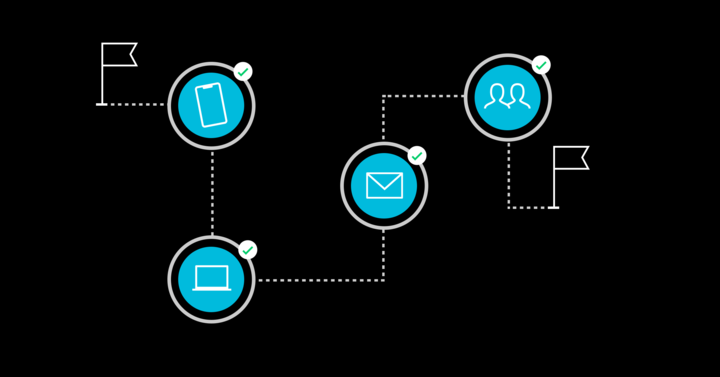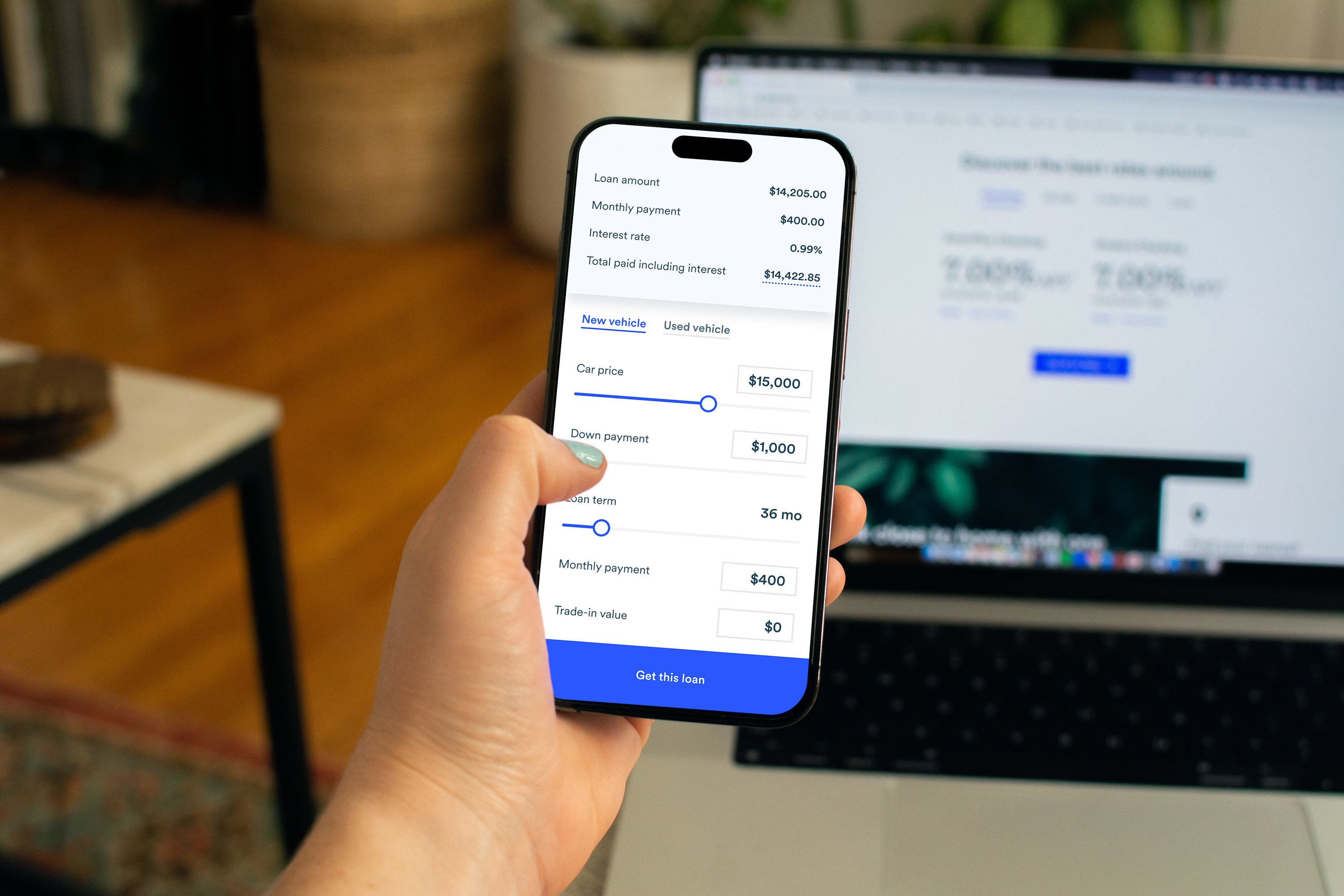
By
McKayl Barrows
You've probably heard it before: banking customers want consistent cross-channel experiences. In fact, 76% have come to expect consistent experiences. Not to mention all the ways a company can benefit from aligning its customers' touchpoints—like our client Gesa Credit Union whose abandonment rate for new member applications dropped from 89% to 39% after aligning customer touchpoints.
So what do consistent cross-channel experiences look like? According to Nielsen Norman Group, creating consistent cross-channel experiences means designing with the entire user journey in mind, not just a single interaction.
In banking, that looks like someone opening an account on their desktop, viewing their statements on their phone, visiting a branch to withdraw cash, or calling customer service, and having similar experiences regardless of how the customer interacts with their bank. Capital One does a particularly good job at this, ranked first in customer satisfaction by J.D. Power.
So, we know that customers want and benefit from consistent experiences across channels, but what's the easiest way for banks to get there? In this article, we share tips for creating consistent cross-channel experiences using a UX framework and how to extend that framework across the company with a brand ambassador team.

How to create a UX framework
We started out looking at the brand's essence—focusing on community and financial education. ‘How do we weave those things into every digital experience and even the physical experience within the branches?’ If a member calls a call center, how do we weave that into every call, every response, every interaction, whether it's online or physical?” —Chad Langford, VP of Marketing, Gesa Credit Union
Our method for creating consistent experiences in Fintech is to build a UX framework made up of a company's experience pillars — essential characteristics based on user research that a company should include in its experience to provide the most value to its customers
Check out this guide from Chris Risdon on how to turn your research into experience pillars.
If you've already conducted research, that's great! Build your experience pillars from there. Otherwise, Blink works with organizations daily to build experience frameworks; get in touch with our team to learn more about we can partner to conduct in-depth user research and identify your unique experience pillars.
You can also conduct preliminary research on your own by looking at your current customer journey in-depth. Consider these questions:
- What does the current state look like in all of these different elements?
- Which areas of our customer journey are consistent?
- Which areas of our customer journey need to be more consistent?
- What decisions are we making based on emotion or what we "think" is right for customers?
- What decisions are we making based on customer data?
- What feedback are we getting from our members that we need to focus on?
These answers, paired with in-depth user research, can help your team establish your experience pillars, aka a UX framework. Once you have your framework and pillars, it's time to extend them to the rest of the company.
Extending your UX framework with a brand ambassador team
Establishing your UX framework is one thing, but it's another to use it successfully. When it was time for Gesa to implement the UX framework they created in collaboration with Blink, their leadership created a brand ambassador program.
A brand ambassador team aims to teach the rest of the company the brand's essence and extend that to your customers. We asked Gesa's VP of Marketing, Chad, for his tips on building and operating a successful brand ambassador team:
How to assemble your team
- Pull employees from every department — Ask for volunteers or assign folks to the program if they seem to be a good fit. Having a variety of perspectives from different business units can ensure a well-rounded team.
- Look for your brand cheerleaders — These are the people who are excited about the brand and your customers. Even if they're in a business unit that doesn't usually meet with customers face-to-face, they're passionate about providing the best experiences possible.
If you're a larger banking organization, an all-company brand ambassador group may be less feasible due to your size. Instead of creating one ambassador team to represent the entire company, set up multiple teams, one for each product link or customer group (i.e., small to medium-sized businesses vs. enterprise and commercial customers).
Keys to an effective ambassador meeting
Now that your brand ambassador team is assembled, it's time to host the first meeting. We recommend setting up weekly or biweekly meetings, depending on how much customer feedback you receive. If you have a lot of customer feedback to sift through, try meeting weekly. Set up your meeting to discuss:
- Current organizational pain points — What's working well for your company? What processes could be improved?
- Ways to extend the brand internally to employees — If you have excited, engaged team members, you will have excited, engaged customers! How can you improve the employee experience? What processes work well for your team members? What processes could be improved?
- Customer feedback you've received — Look for similarities in customer feedback. For example, are there any pieces of feedback that you seem to get over and over again? Improving those pain points first will likely have the most significant impact on your CX improvement efforts.
Maximizing the banking customer experience
Creating consistent cross-channel experiences in banking is a big challenge for many. However, as competition in the banking industry increases, and customers have more chances to shop around for the bank that best meets their needs, companies that align their customer touchpoints will reap the benefits, like Gesa, who reduced their membership sign-up abandonment rate by 37%.
Start by identifying your customer pain points with in-depth user research, establish a UX framework with key experience pillars, and then build an ambassador group to extend your findings across the company and to your customers.
If you already have your UX framework and key experience pillars, use this guide to extend your UX framework. If you want to work with a team of experts to understand your customers better and establish your experience pillars, contact our team!



